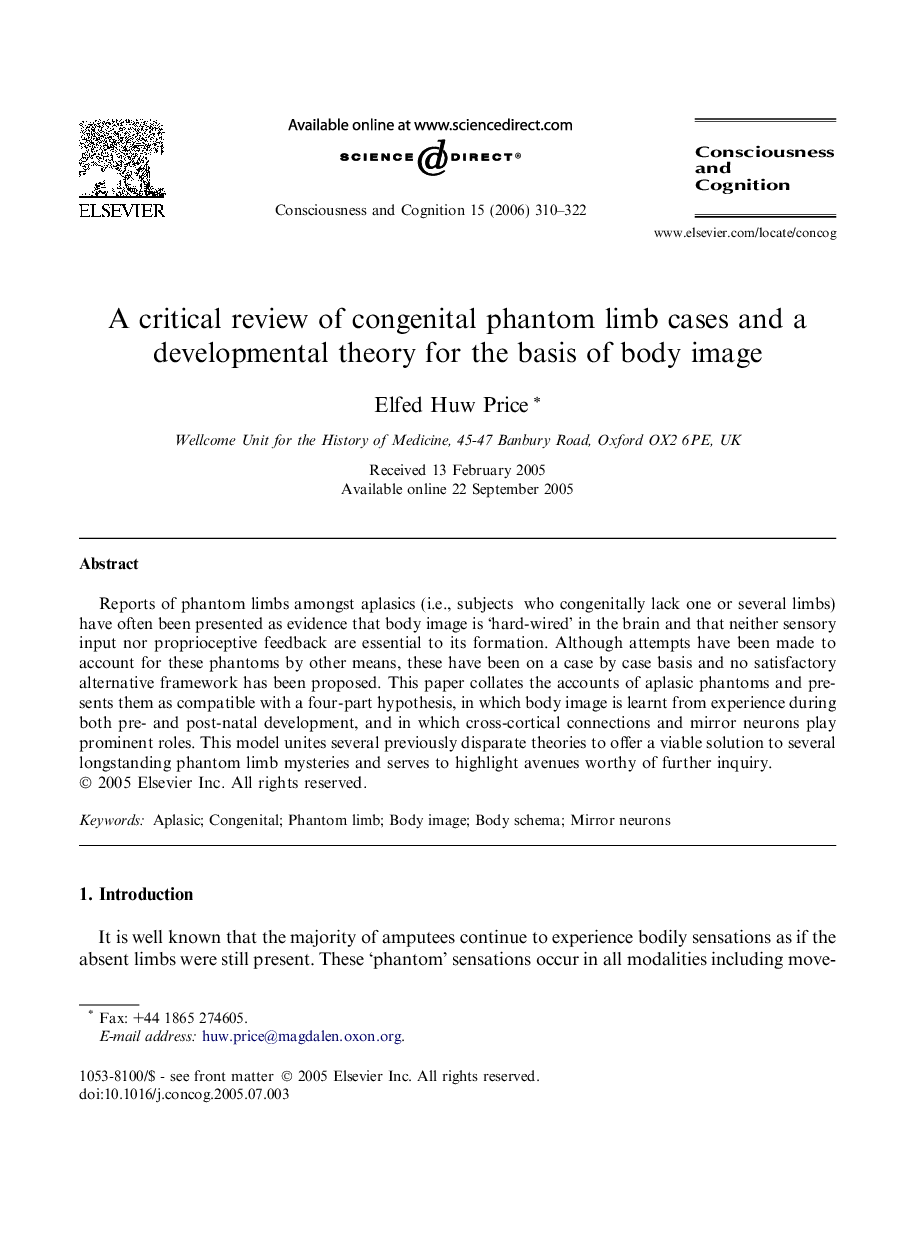| Article ID | Journal | Published Year | Pages | File Type |
|---|---|---|---|---|
| 927925 | Consciousness and Cognition | 2006 | 13 Pages |
Reports of phantom limbs amongst aplasics (i.e., subjects who congenitally lack one or several limbs) have often been presented as evidence that body image is ‘hard-wired’ in the brain and that neither sensory input nor proprioceptive feedback are essential to its formation. Although attempts have been made to account for these phantoms by other means, these have been on a case by case basis and no satisfactory alternative framework has been proposed. This paper collates the accounts of aplasic phantoms and presents them as compatible with a four-part hypothesis, in which body image is learnt from experience during both pre- and post-natal development, and in which cross-cortical connections and mirror neurons play prominent roles. This model unites several previously disparate theories to offer a viable solution to several longstanding phantom limb mysteries and serves to highlight avenues worthy of further inquiry.
